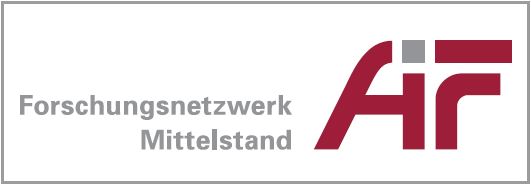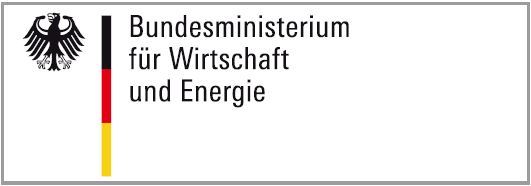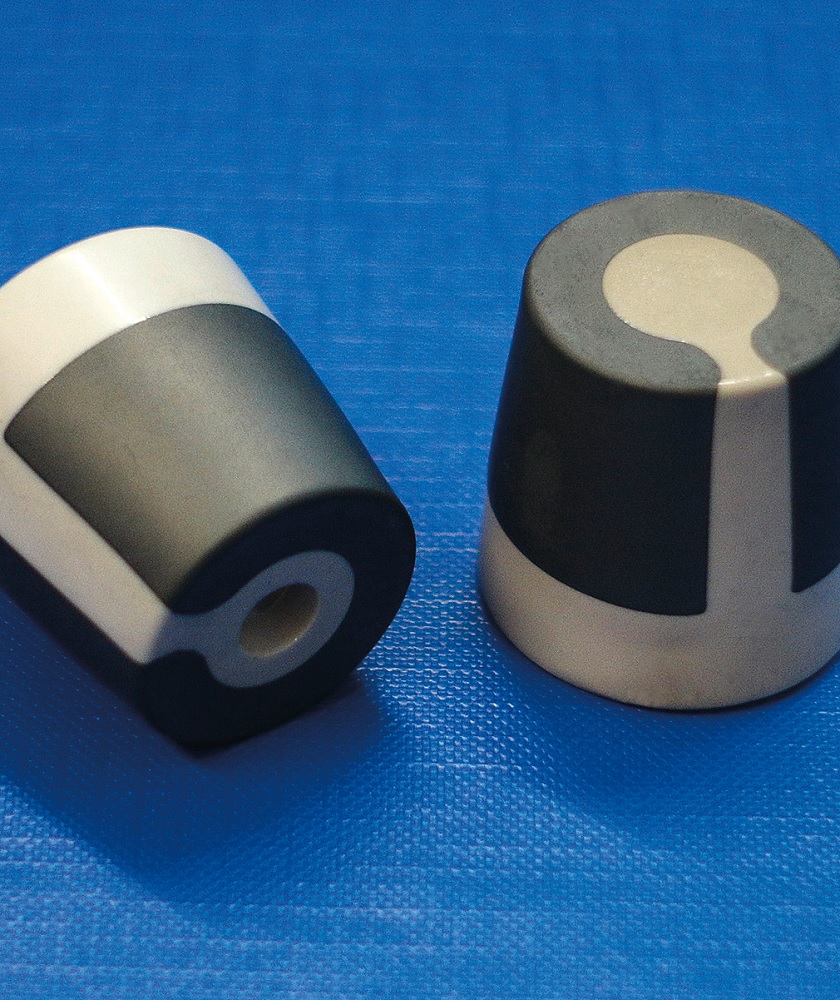
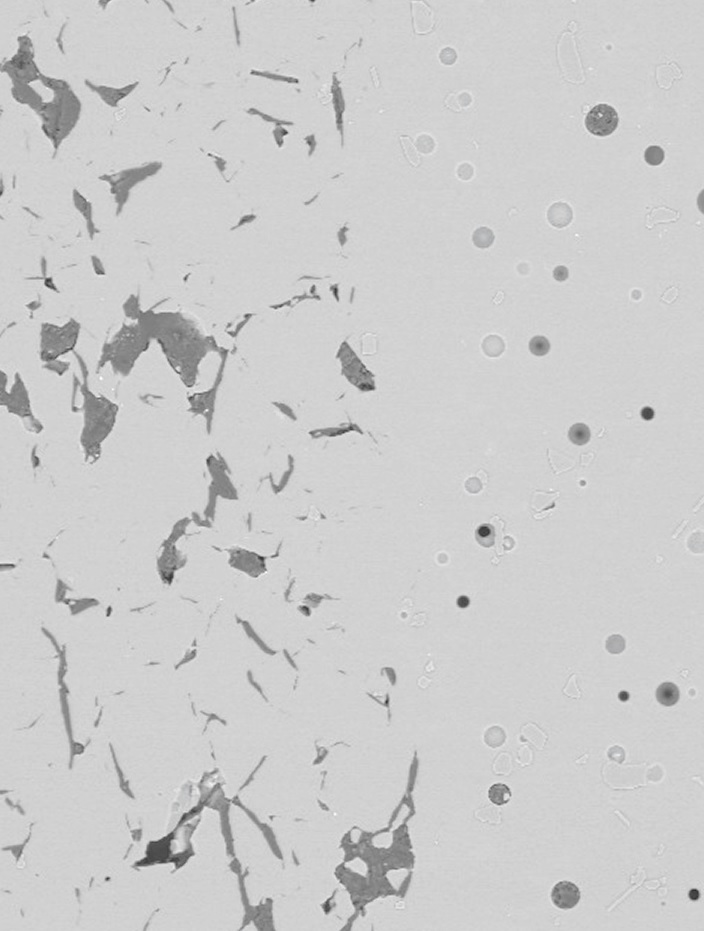
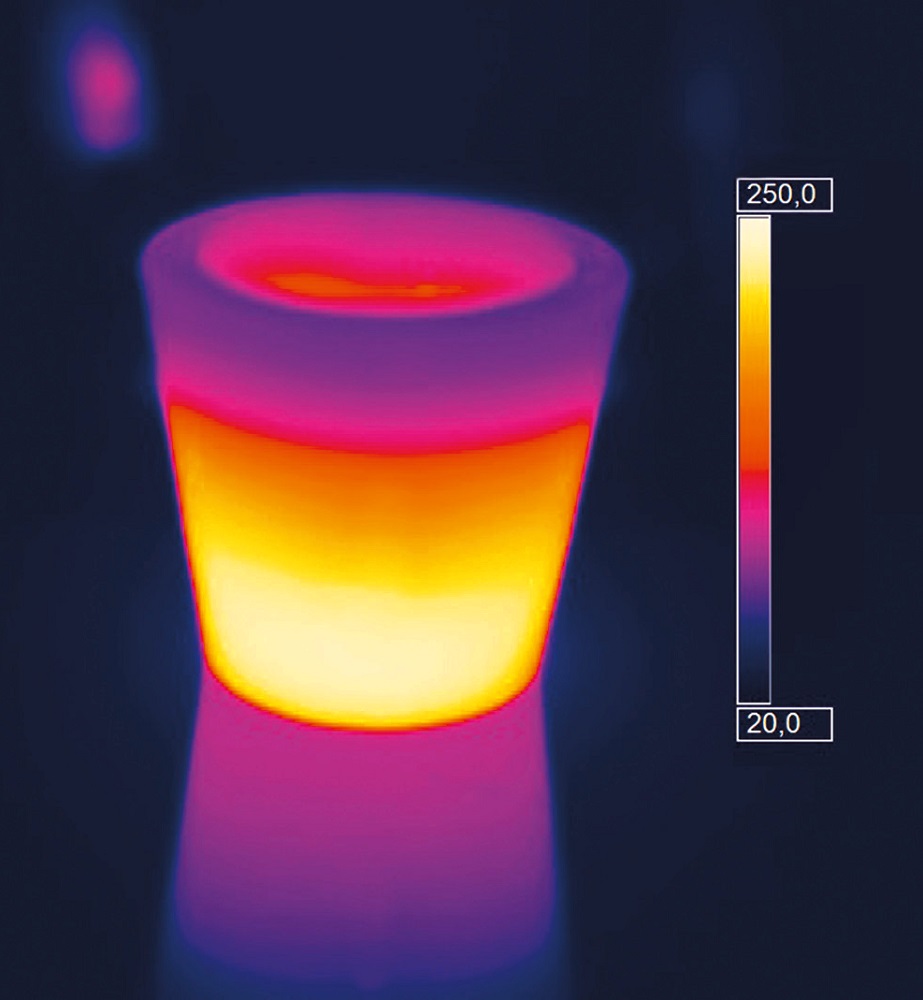
Glass powder injection molding offers an alternative, powderbased route to conventional glass component manufacturing, which mainly starts from a molten glass. It allows for largescale production of glass components with complex geometries, microstructured surfaces, and sharp edges without any additional costly grinding or etching steps. The final product properties are attained by debinding and sintering, as is the case for ceramic components. As a special advantage of the powder-based shaping route, additional functionalization of the glass component can be achieved through addition of secondary phases, such as pigments or graphite powder in particle form. For instance, an electrically conductive glass component that can be used as a heating element owing to its ohmic resistance has been attained by the addition of graphite powder.
One special variant of powder injection molding originating from two-color injection molding of polymers is the so-called two-component injection molding process, which was recently developed at Fraunhofer IKTS for producing ceramic components with a combination of properties, such as electrical conductivity and electrical insulation or hardness and ductility as well as stainless steel–zirconia compounds. Now this shaping method has been used for combining electrically conductive and electrically insulating sintered glasses. For successful combination of the two glasses in a subsequent co-firing process, comparable thermal expansion coefficients and comparable shrinking behavior were necessary requirements.
In the present case, two commercially available glass powders (8330 and 8250, SCHOTT AG) were mixed with graphite (KS 15, Imerys) to yield distinct electrical conductivity. Shrinkage of the electrically insulating glass component was adjusted by adding alumina powder. As an outcome of the project, electrically heatable glass nozzles and crucibles were manufactured.
Acknowledgments
Financial support from the German Federation of Industrial Research Associations (AiF) is gratefully acknowledged (Industrial Collective Research (IGF) project no. 17755 BR).
